Ru_Arctic
Previous article: Russia seeks submarine advantage in Arctic

 Russia is pursuing a number of underwater projects which will come together to form a substantial strategic advantage in the Arctic. These are both military and civilian in nature and fit Russian ambitions to dominate the region both militarily and economically.
Russia is pursuing a number of underwater projects which will come together to form a substantial strategic advantage in the Arctic. These are both military and civilian in nature and fit Russian ambitions to dominate the region both militarily and economically.
Topics:
Arctic Bastion
Special Mission submarines
Under-ice hydrocarbons
Cyber
Strategic context
As in Soviet times, the Russian regime sees itself as surrounded by hostile countries which it believes are seeking to diminish Russian military influence. A recent Russian policy document outlined the latest naval strategy, stating that there is: “the desire of a number of states, first of all the United States of America and her allies [NATO], to dominate the World Ocean, including the Arctic, and to achieve the overwhelming superiority of its naval forces.”
The extent to which NATO is seeking to dominate the Arctic is open to challenge since there is actually a distinct lack of investment in these capabilities. The US does maintain an under-ice submarine capability, but on the surface it has just one active Ice Breaker (USCGC Polar Star). Meanwhile the only other country with a potentially persistent under-ice submarine capability, Britain, has all but given it up maintaining it with its over-stretched submarine fleet rarely training under ice – without training, the capability is soon lost. Canada and Norway do not have under-ice submarine fleets and Denmark has abandoned its submarine capability altogether.
Russian planners are likely very aware of this. It does not subtract from the seriousness of Russian intentions however. Behind the military justifications is an economic priority which is driving naval strategy: economic exploitation of the Arctic. This comes in two main flavors, a) Hydrocarbons and b) shipping routes (The Northern Sea Route and Northeast Passage).
Chief among these is Hydrocarbons. The Russian policy document states that: “The current stage of development of mankind is characterized by the expansion of economic and scientific activity on the continental shelf and the bottom of the World Ocean, involving their resource potential in industrial production.” Although this is referring to several regions, the Arctic Shelf is key among Russian seabed hydrocarbon plans.
The ultimate book of Special Forces subs Covert Shores 2nd Edition is the ONLY world history of naval Special Forces, their missions and their specialist vehicles. SEALs, SBS, COMSUBIN, Sh-13, Spetsnaz, Kampfschwimmers, Commando Hubert, 4RR and many more.
Check it out on Amazon
The rapid retreat of the Ice Cap due to Climate Change could be seen to be benefiting Russia (note that Russia does not deny Climate Change in its strategy). The hydrocarbon deposits will become increasingly accessible to surface vessels, at least for part of the year, and the Northeast Passage will be navigable for more of the year or all-year-round. For Russia it is a race to push development of these national assets to the point where they are irreversible.
Therefore recent Russian efforts in the Arctic seem to be focused on establishing that it is defacto Russian territory. As well as some inherent military value, these activities have an internal propaganda and international messaging context. Examples:
(1) using Mir submersibles to plant the Russian flag on sea floor beneath the North Pole in 2007. Ironically the Mir submersibles were constructed in Finland.
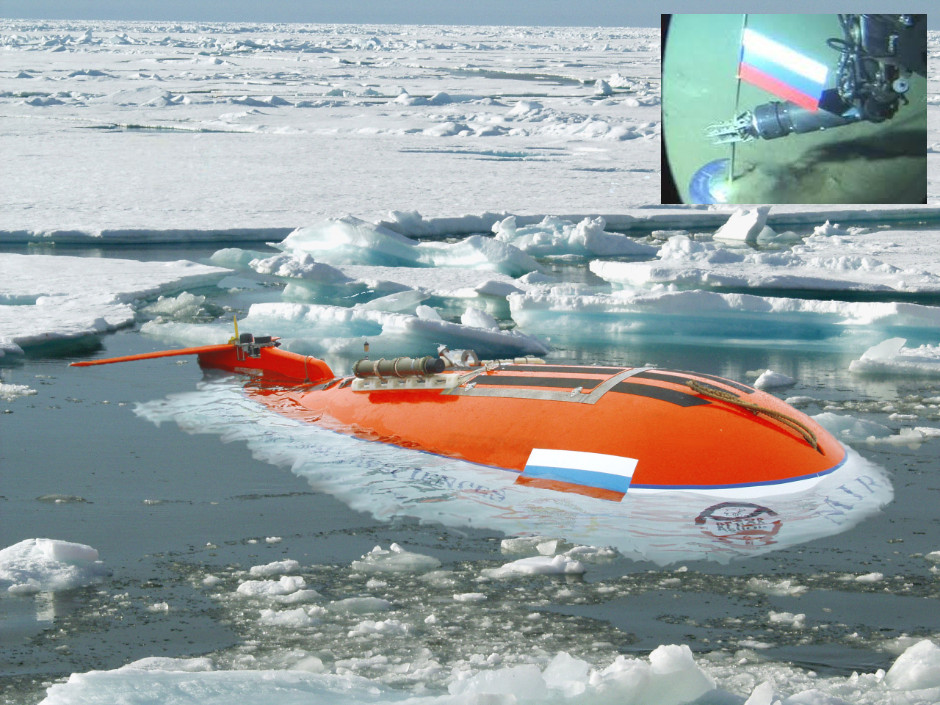
(2) Expeditions by armed & uniformed military personnel to North Pole from the floating ice camp at Barneo in 2016 & 2017. In Russian media these are presented at military exercises to develop capabilities
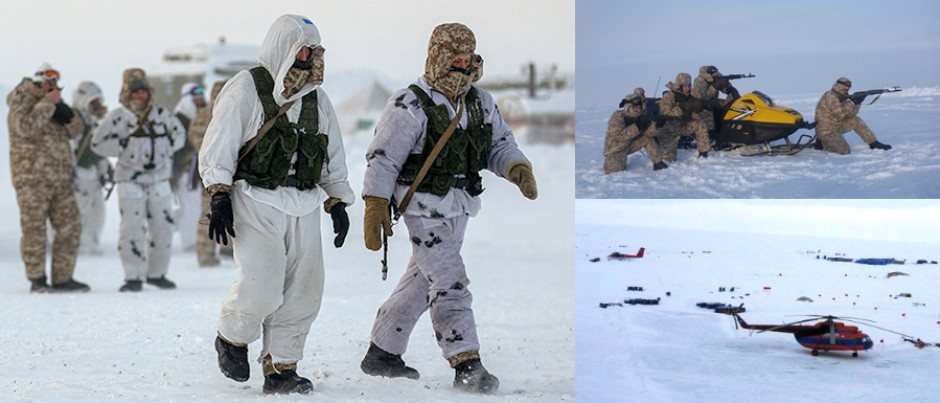
(3) Establishing the Arctic Trefoil (Arkticheskiy Trilistnik) military base on Alexandra Land which was visited by Putin in March 2017, and other Arctic military bases which are painted in Russian colors. The new facilities in the Arctic are either military or, in the case of nominally civilian bases, actually dual-purpose, intended to “ensure the basing of civil vessels, ships and vessels of the Navy and federal security services”.
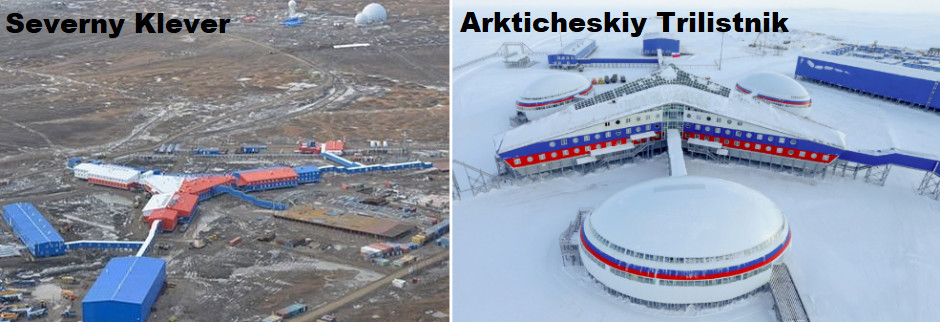
(4) The public display of several Arctic specific weapons systems in the annual Victory Day parade in May 2015.

Arctic Bastion
Like the US Navy the Russian Navy maintains an under-ice submarine capability. The main difference however is that the Russian Navy has a doctrine of deploying its ballistic missile submarines under the ice where they are almost impervious to anti-submarine aircraft and satellites. The submarines would have to surface through areas of open water or thin ice to fire their missiles, but this is viewed as an acceptable compromise.
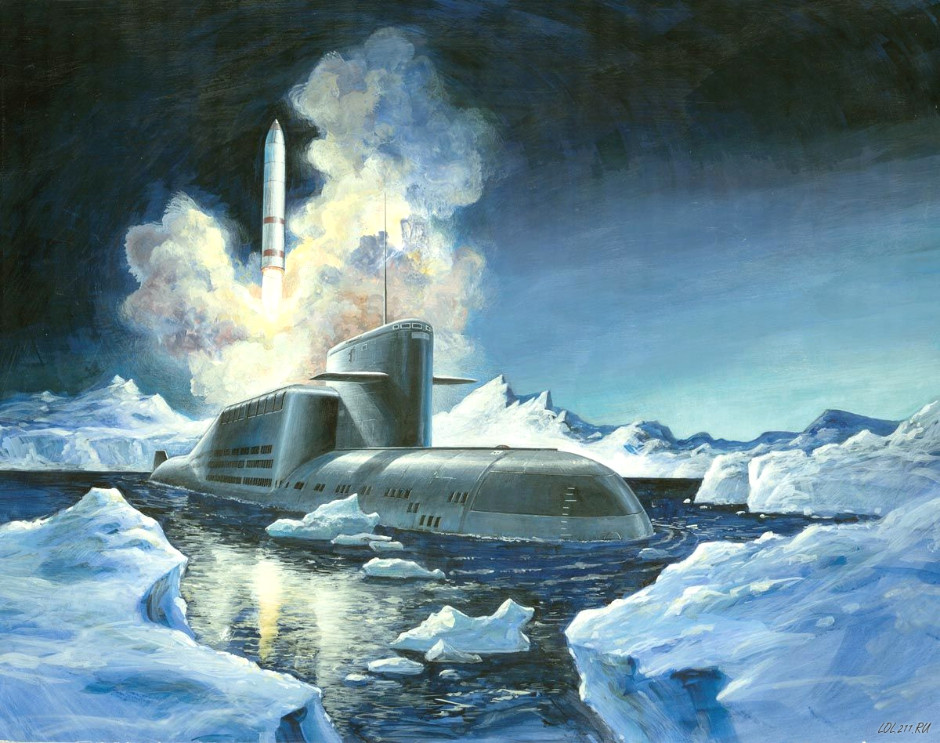
Classic Cold War artwork of DELTA-III Class SSBN Firing ballistic missile from the safety of the Arctic bastion, Edward L Cooper DIA 1985. The concept remains valid.
Today Northern Fleet’s has six DELTA-IV Class SSBNs and one newer BOREI Class SSBN (plus one TYPHOON used for tests). As more BOREI’s join they will replace the DELAT-IVs.
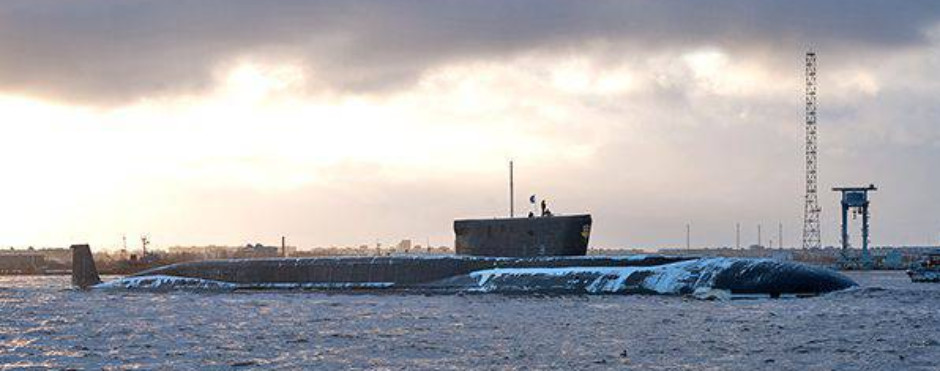
Project 955 BOREI Class SSBN
The SSBNs are protected in their Arctic Bastion by a fleet of nuclear powered attack submarines (SSNs) which can also operate under the ice. The strategy document emphasises ”performance of inter-theater maneuvers, as well as regular subglacial navigation of the Navy’s nuclear submarines”:
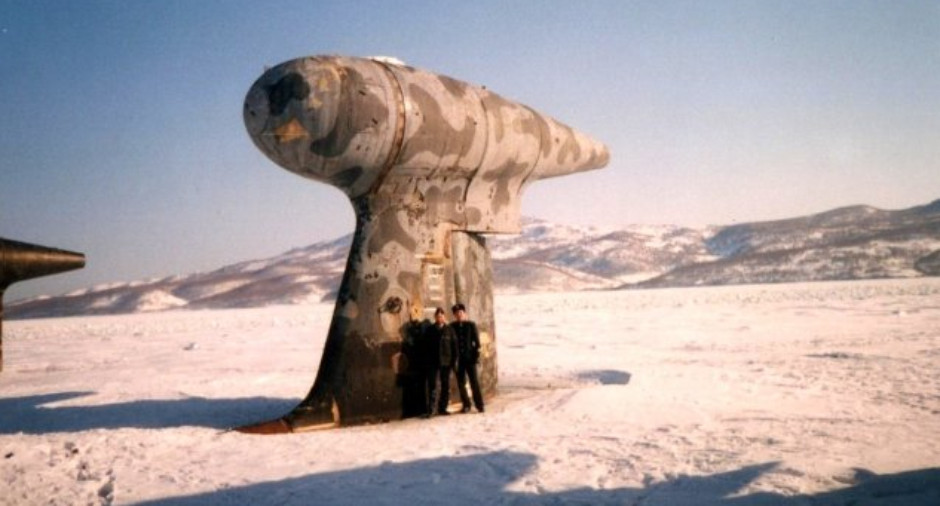
File image of two AKULA SSNs practicing under ice operations. These pods are on the tail fin and contain the towed sonar array.
The current SIERRA-I/II and AKULA Class SSNs will eventually be replaced by the HUSKY Class but this is many years away.
Special Mission submarines
Russia maintains the world’s largest fleet of Special Mission submarines dedicated to underwater engineering. Commonly termed spy submarines, these are used almost exclusively for covert operations, mostly in Arctic waters. Investment in this capability has continued throughout Russia’s economic hardships, signaling the critical strategic importance of this capability to Russia.
Russia has recently launched a stretched DELTA-IV Special Mission host submarine, the Project-09787 BS-64 Podmoskovye, and will launch the Project-09852 Belgorod stretched OSCAR-II host submarine in 2018. These will form part of a fleet of Special Purpose submarines operated by the Navy on behalf of the Main Directorate of Deep Sea Research (GUGI). Both are large, with the latter claiming the title of the world’s largest submarine. Their sheer scale also indicates the financial investment involved amidst cash-struck military budgets.
Original artwork - CLICK for HIGH-RESOLUTION image.
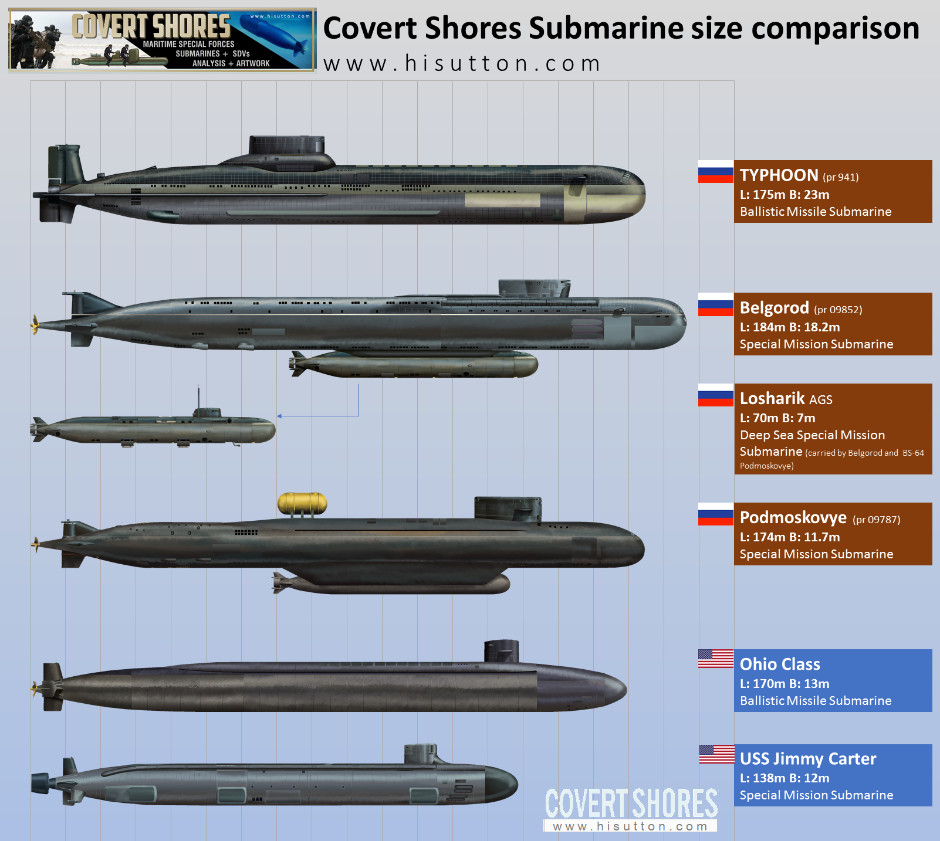
They will be able to carry the Project-10831 Losharik deep diving midget submarine which can be used for underwater engineering. Together with three smaller and older deep diving midget submarines, these are termed AGS (Deep Water Stations) and allow operations at depths of between 1000m and 3000m depending the midget submarine.
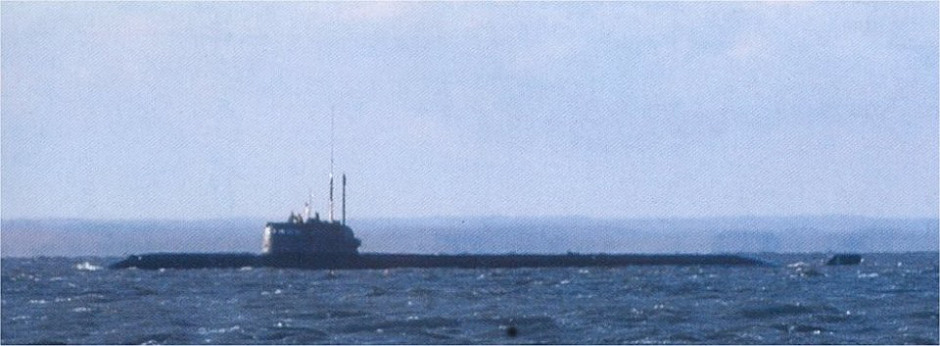
LOSHARIK
The operating depths of the host submarine and midget submarines, combined with the dimensions of the submarines (which dictate safe operating space required) and overhead ice conditions, particular the depth of ice keels which protrude deep beneath the surface, will dictate the areas where the host submarine and midget submarine combination can be employed. Much of the Arctic will be too shallow or too deep, and much of the remaining area is beyond Russia’s recognized economic zone.
The main role identified for these boats is deployment of a new underwater sensor network in arctic waters, including under the ice cap. This may be the same system which Russian press has now named as HARMONY. It is intended to track NATO and Russian submarines in the Arctic.
Under-ice hydrocarbons
On the commercial front Russia has been advertising its plans to exploit the Arctic’s natural resources. In January 2017 the ICEBERG project was showcased at an exhibition in Arkhangelsk. This showed a number of new technologies for mining hydrocarbons under the ice cap, including new submarine designs, underwater nuclear power plants, sea-floor drill-heads, ROVs and icebreakers.
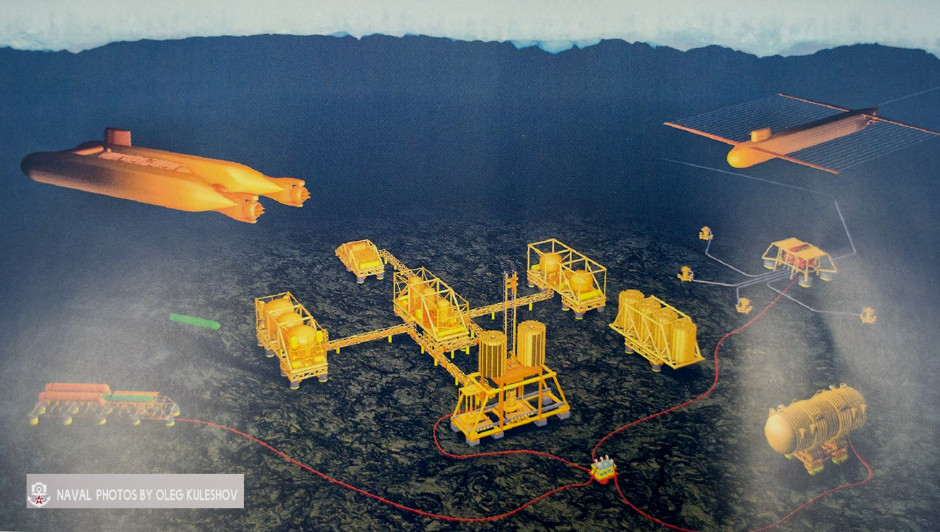
Iceberg
The lines between military and commercial underwater engineering capabilities appears blurred, which may reflect that they are part of the same broad strategy. The Putin regime does not appear to differentiate between purely-military and commercial natural resource strategy in the way which Western governments might; it is one strategy. This overlap is demonstrated by the fact that a heavy-lift submarine proposed in ICEBERG does not appear to be pursued. While some of the sea-floor installations for ICEBERG could be laid by surface ships, to do it under ice will still require large submarines. The gap is naturally filled by the Navy / GUGI’s large host submarines. It can therefore be assessed that Naval assets form part of the natural resource strategy.
The largest items requiring heavy lift submarines are likely to be the underwater nuclear power plants. Confusingly two Russian design bureaus are promoting broadly equivalent designs which could be used to power either under-ice sensors or oil/gas drilling. The NIKIET bureau (part of ROSATOM) is promoting its ‘Shelf’ ATGU (Autonomous Nuclear Turbine Generator) which is assessed to be small enough to be carried by the DELTA-IV and OSCAR-II based host submarines. It is 14m (45ft) long and 8m (25ft) in diameter and weighs 335 tons. Illustrations in company reports appear to show it carried on the back of a submarine. Meanwhile the OKBM bureau, which is also part of ROSATOM, is promoting its ‘Girdropress’ PNAE (Underwater Uninhabited Nuclear Power Module) for commercial use. This is essentially equivalent, and both systems have received similar levels of press attention.
ICEBERG is a civilian element of the strategy. Despite this a Russian official has suggested that the PNAEs would be defended by some form of torpedo-like active defense to prevent tampering. This may apply to both military and civilian applications.
The most significant ICEBERG proposal is for a large dedicated Seismic Survey Submarine. A model and literature was presented by the Rubin design bureau in the exhibition in January 2017 and it has since been reported that construction will go ahead, starting in 2020. the submarine is ostensibly civilian and does not yet have a name or designation reported. This is a unique concept for a nuclear powered submarine with very large wing-like structures which fold into the casing like the blades on a pocket knife.
These ‘wings’ will carry the receiving arrays for a sub-bottom profiling sonar. They are unlikely to provide hydrodynamic lift because that would require constant use of the control surfaces to maintain a steady depth. This may be one of the factors which dictate the very slow operating speeds of 2-3 knots reported when the wings are deployed. The sub-bottom sonar will use very low frequency pings to see several meters beneath the sea floor. Ordinarily these devices are carried by one or more ships, but the submarine will allow seismic surveys under the ice cap for the first time.
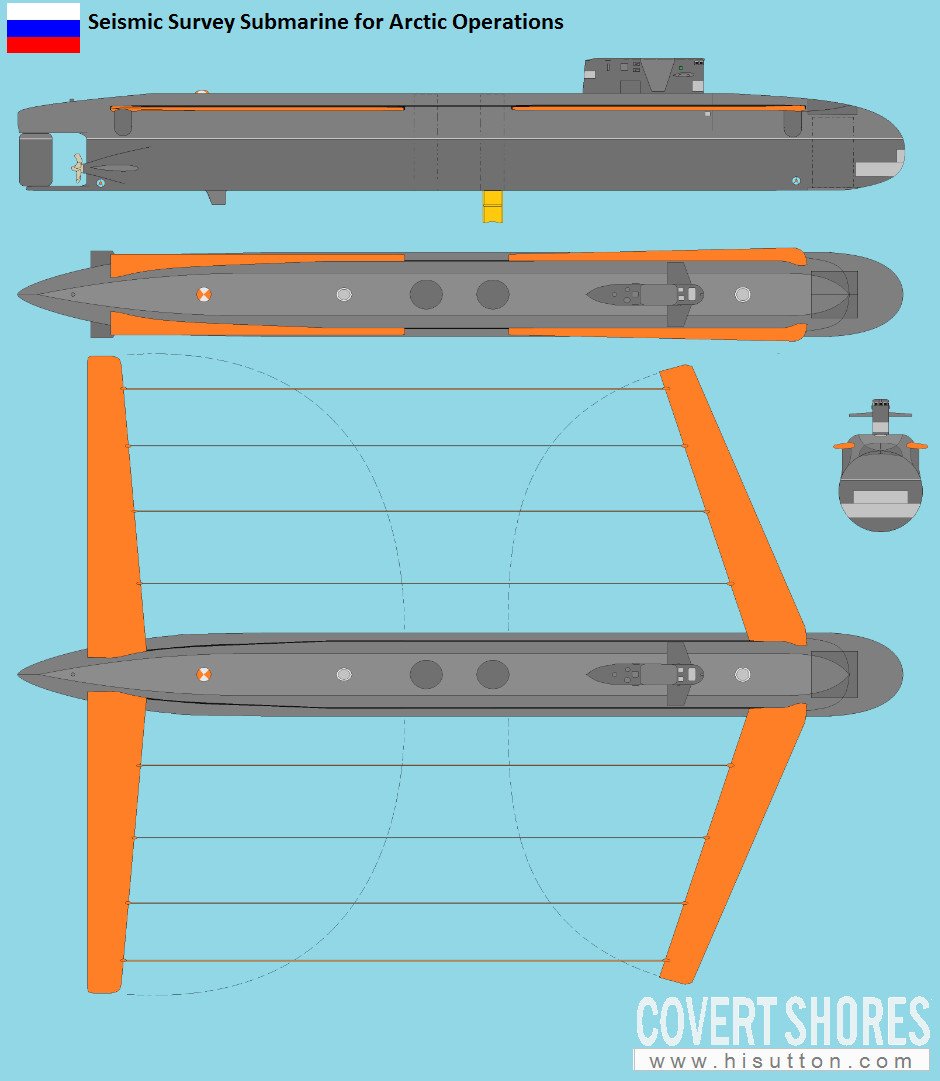
With its 100m wide ‘wingspan’ the Seismic Survey Submarine with be even more limited in its areas of operation than the GUGI host submarines.
The likelihood of the Seismic Survey Submarine being built is difficult to judge. There are multiple variables which may affect it, more so perhaps than an equivalent military submarine project: Despite claims that it will only cost 40% as much as a military submarine (type unspecified), it will undoubtedly be an incredibly expensive project requiring several years to complete, which exposes it to delays and cancellation risk. And the civilian funding will not exempt it from the political infighting that plagues large projects: a hint at this comes from reports that the Ministry of Natural Resources and Environment and the Ministry of Economic Development have criticized the idea of constructing 3D Seismic Survey ships from their budget. And it competes for shipyard space with military projects which may get priority causing delays beyond the control of its budget holders.
Cyber
A forth category, cyber-warfare aimed at public perception in the West (i.e. fake news and organized internet trolls) has yet to be fielded. There have been a few examples of fake news, for example the mischaracterization of 2010 Norwegian led Exercise COLD RESPONSE in Arctic as a NATO exercise in Swedish Arctic territory, and the May 2017 misreporting of a Canadian air force exercise as being over the Arctic). However these are few and other examples blur with a wider anti-NATO expansion in Baltic context. In the future we can expect to see more fake news and trolling aimed at:
a) casting NATO as an aggressor in the Arctic
b) reinforcing Russia’s claim to the Arctic and its natural resources
c) confusing specific issues in the minds of western public by fueling divisive groups in Sweden, Norway and Finland. The latter, which currently chairs the Arctic Council, and has seen increasingly activist Russian minority (e.g. the first Russian Victory Day parades in 50 years organized by Russian groups in May 2017). These are likely to be the first targets.
Conclusion
To conclude, these three categories of activity (symbolic messaging, military underwater engineering and intelligence, and civilian under-ice natural resource technology) will mean that Russia will have a significant head start if or when full-scale exploitation of the Arctic begins.






